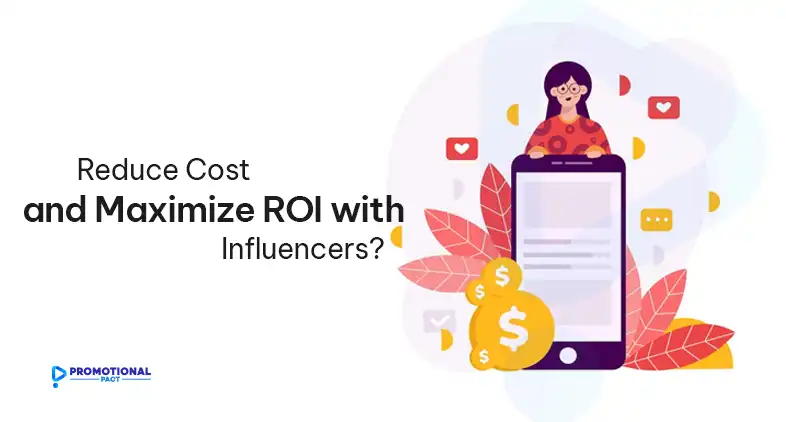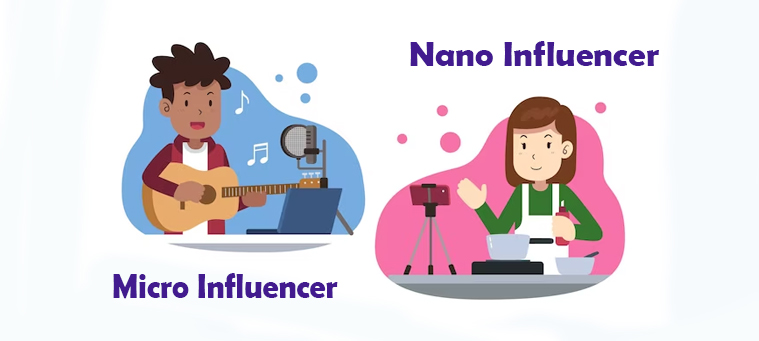
From small startups to global brands, leveraging the reach and authenticity of influencers allows businesses to connect with their target audience in a more personal and engaging way. However, influencer marketing comes with a price tag, and many brands struggle with keeping costs manageable while maximizing return on investment (ROI). The good news is, with the right approach, it’s possible to reduce costs significantly and still get impressive results by working with high-performing influencers.
This article will walk you through strategies to identify high-performing influencers, reduce influencer marketing costs, and optimize campaigns to maximize ROI. Real examples, practical tips, and data-driven insights will make it clear how brands can stretch their marketing budgets while ensuring successful outcomes.
What is Influencer ROI?
Influencer ROI is a metric that helps brands understand the return on investment from their influencer marketing campaigns. It essentially tells you whether the money you’re putting into influencer partnerships is delivering the results you expect. The formula for calculating influencer ROI is straightforward:
ROI = (Return – Investment) / Investment
For example, if you spend $10,000 on an influencer campaign and generate $25,000 in sales, your ROI would be 150%. The higher the ROI, the better the performance of the campaign.
However, calculating ROI goes beyond just looking at sales. You should also consider other factors such as:
- The reach of the influencer’s audience.
- Engagement rates, including likes, shares, and comments.
- The alignment between the influencer’s audience and your target demographic.
- Conversion rates, which can include not just purchases but also actions like sign-ups, app downloads, or new followers.
According to a study by Influencer Marketing Hub, for every $1 spent on influencer marketing, brands make an average of $5.20. This figure highlights the high potential for ROI, but optimizing it requires more than just selecting popular influencers.
Identifying High-Performing Influencers
To get the most out of your influencer marketing efforts, you need to identify high-performing influencers who are not only cost-effective but also capable of driving results. High-performing influencers often share a few key traits:
Strong Engagement Rates
First, they have strong engagement rates. Engagement rate is often a more reliable indicator of success than follower count. While a mega-influencer with a million followers might seem appealing, their engagement rate could be far lower than a micro-influencer with just 50,000 followers. The latter might be more connected with their audience, leading to better campaign results.
Alignment with Brand Value
Second, high-performing influencers align with your brand’s values. Authenticity is critical in influencer marketing. According to Edelman’s Trust Barometer, 63% of consumers trust influencers’ opinions about products far more than what brands say about themselves. This trust can only be built if the influencer’s values match those of your brand.
Proven Track Record
Finally, high-performing influencers have a proven track record. Before working with any influencer, you should request case studies, performance metrics, or even testimonials from brands they’ve previously worked with. Tools like HypeAuditor and Traackr help brands analyze the influencer’s past performance, audience demographics, and fake follower detection, making it easier to assess whether an influencer is a good investment.
Reducing Costs Without Sacrificing Quality with High-Performing Influencers
Many brands assume that working with influencers means hefty fees, but this doesn’t have to be the case. There are several strategies you can implement to reduce costs without sacrificing campaign quality.
Partner With Micro-Influencers
One of the most effective methods is to partner with micro-influencers. These influencers typically have between 10,000 to 100,000 followers. While their reach may be smaller compared to macro or celebrity influencers, micro-influencers often deliver higher engagement rates. Studies show that micro-influencers can achieve up to 60% higher engagement rates than their larger counterparts. Moreover, they tend to charge significantly less for sponsored content. A study by Influencer Marketing Hub found that while a macro-influencer might charge around $10,000 for a post, a micro-influencer may charge as little as $500 to $2,000, depending on the niche.
Establish Long-Term Partnerships
Another way to reduce costs is to establish long-term partnerships with influencers. Instead of working with an influencer on a one-off campaign, propose a longer-term relationship. Not only does this result in a more authentic relationship between the influencer and your brand, but you can often negotiate a lower rate per post or project in exchange for ongoing collaboration. Long-term partnerships also allow influencers to create more consistent and meaningful content that feels less like a one-time advertisement.
Repurpose IGC
Repurposing influencer-generated content is another smart cost-saving strategy. When influencers create high-quality photos, videos, or blog posts for your campaign, you can repurpose this content for other marketing channels such as paid ads, social media posts, email newsletters, and even your website. This way, the value of the influencer’s content extends far beyond the initial post, reducing the need to invest in additional creative resources.
Leverage Influencer Affiliate Programs
Lastly, consider introducing influencer affiliate programs. Instead of paying influencers upfront, some brands offer a commission-based payment model where influencers earn money based on the sales or leads they generate. This not only reduces the initial outlay but also incentivizes influencers to create content that drives conversions.
Optimizing Campaigns for Maximum ROI
To ensure your influencer campaigns are as effective as possible, it’s critical to optimize them for maximum ROI. This begins with setting clear objectives. Before launching any campaign, determine the key performance indicators (KPIs) you’ll use to measure success. Whether your goal is to boost brand awareness, increase sales, or generate new leads, clearly defined objectives will help guide the campaign and determine ROI.
For instance, a brand looking to generate awareness might focus on metrics like reach and engagement. In contrast, a brand focused on sales will track conversions, click-through rates, and cost-per-acquisition (CPA). According to eMarketer, engagement rates on Instagram influencer posts typically range from 1% to 5%. Setting realistic expectations based on industry benchmarks is essential.
You should also consider the content types that yield the highest ROI. While static Instagram posts remain popular, other formats such as Instagram Stories, YouTube videos, and TikTok challenges often lead to higher engagement and conversion rates. For example, Klear found that influencer marketing campaigns on TikTok can result in up to 5x higher engagement than on Instagram.
Allowing influencers creative freedom can also lead to better engagement and, ultimately, higher ROI. Influencers know their audiences best, and when given the flexibility to design campaigns that feel natural, the results are often more authentic and relatable. Take, for example, Gymshark’s influencer strategy, which allowed influencers to showcase their workout routines in a way that felt genuine, leading to a reported 78% growth in revenue in one year.
During the campaign, it’s important to measure performance in real-time. By tracking performance metrics and adjusting the campaign based on data insights, brands can optimize for better results. For example, A/B testing different types of content or influencer strategies allows brands to refine their approach and allocate their budget where it’s most effective.
Negotiating Smart Contracts with Influencers
When working with influencers, negotiating a smart contract can significantly impact cost-efficiency.
Bundle Multiple Services
One strategy is to bundle multiple services into a single contract. Rather than paying for individual posts, negotiate deals that include a package of posts across different platforms (e.g., Instagram, TikTok, YouTube) or multiple collaborations over several months. This can result in a lower per-post rate while ensuring ongoing exposure for your brand.
Use Data to Negotiate
Another way to keep costs down is to use data to negotiate rates. By showing influencers performance metrics and explaining how their results compare to industry benchmarks, you can often negotiate a fairer price. For example, if an influencer’s engagement rate is below the average for their niche, you can use that data to negotiate a lower rate. Alternatively, if their past campaigns have proven highly successful, you might justify paying a premium for their services.
Explore In-Kind Partnerships
Finally, consider exploring in-kind partnerships and gifting. Instead of paying influencers in cash, offer them free products or services in exchange for promotion. This works particularly well with micro-influencers or influencers who are genuinely passionate about your product. Brands like Glossier have successfully used product gifting to create buzz and reduce marketing costs.
Maximizing ROI Post-Campaign
Once your campaign is complete, the work isn’t over. To truly maximize ROI, you must analyze campaign performance and use the insights to improve future campaigns.
There are several tools available to help track influencer marketing performance, including Google Analytics, Upfluence, and Sprout Social. These tools allow you to assess the campaign’s overall impact, from direct sales to increased web traffic and follower growth.
It’s also essential to use post-campaign data to fine-tune future campaigns. By analyzing which influencers performed the best, you can narrow your focus for future partnerships. For example, if a particular micro-influencer generated significant engagement and conversions at a lower cost than a larger influencer, prioritize that relationship in the future.
Finally, don’t forget to repurpose successful content. High-performing influencer content can be used in future campaigns, including paid advertising, social media posts, and even your website’s homepage. This extends the value of your investment and increases the overall ROI of your influencer marketing strategy.
Bottom Line
Influencer marketing offers immense potential for brands looking to connect with their target audience in authentic, impactful ways. While it’s easy to assume that influencer marketing comes with high costs, the right strategies can help you reduce expenses while maximizing ROI. By identifying high-performing influencers, optimizing your campaigns, negotiating smart contracts, and continuously analyzing performance, you can get the best possible results from your influencer marketing efforts without breaking the bank.

